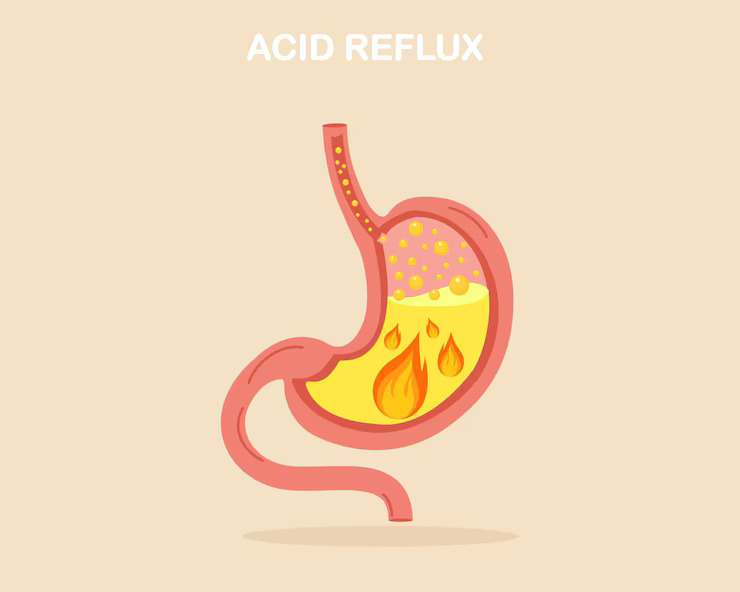Acid Reflux, Heartburn, GERD

Acid reflux, commonly known as heartburn, occurs when the lower esophageal sphincter (LES), a valve between the esophagus and stomach, malfunctions. This allows stomach acid to flow back into the esophagus, causing discomfort and burning sensation in the chest. When heartburn occurs frequently, at least twice a week, it may indicate gastroesophageal reflux disease (GERD), a more severe form of acid reflux.
Symptoms:
- Sour or bitter taste of stomach acid in the mouth.
- Bloating and black or bloody stool.
- Vomiting blood.
- Difficulty swallowing (dysphagia).
- Nausea, weight loss, burping, and hiccups.
- Respiratory symptoms like wheezing, dry cough, or sore throat.
Causes:
- Hiatal hernia: The upper stomach and LES move above the diaphragm, allowing stomach contents to reflux into the esophagus.
- Dietary factors: Eating large meals, lying down after eating, consuming acidic or fatty foods, alcohol, caffeine, and smoking.
- Medications: Certain drugs like ibuprofen, aspirin, muscle relaxers, and blood pressure medications may trigger acid reflux.
Diagnosis:
- Barium swallow: A liquid is swallowed to visualize structures on X-ray, checking for ulcers or esophageal narrowing.
- Esophageal manometry: Measures esophageal and LES function to assess motility and pressure.
- pH monitoring: Measures esophageal acidity by inserting a device into the esophagus for 24-48 hours.
- Endoscopy: A flexible tube with a camera examines the esophagus and stomach for abnormalities, with biopsy if needed.
- Upper GI series: A special X-ray evaluates the esophagus, stomach, and duodenum, ruling out other conditions like peptic ulcers.
Treatment:
- Lifestyle changes: Avoiding trigger foods, eating smaller meals, not lying down after eating, weight loss, and quitting smoking.
- Medications: Antacids, H2 blockers (e.g., ranitidine), proton pump inhibitors (e.g., omeprazole) to reduce acid production.
- Surgery: Fundoplication is a surgical procedure to reinforce the LES and repair a hiatal hernia if medications fail to control symptoms.
- Endoscopic procedures: Techniques like Stretta procedure or LINX device placement may be used to strengthen the LES and improve reflux symptoms.
